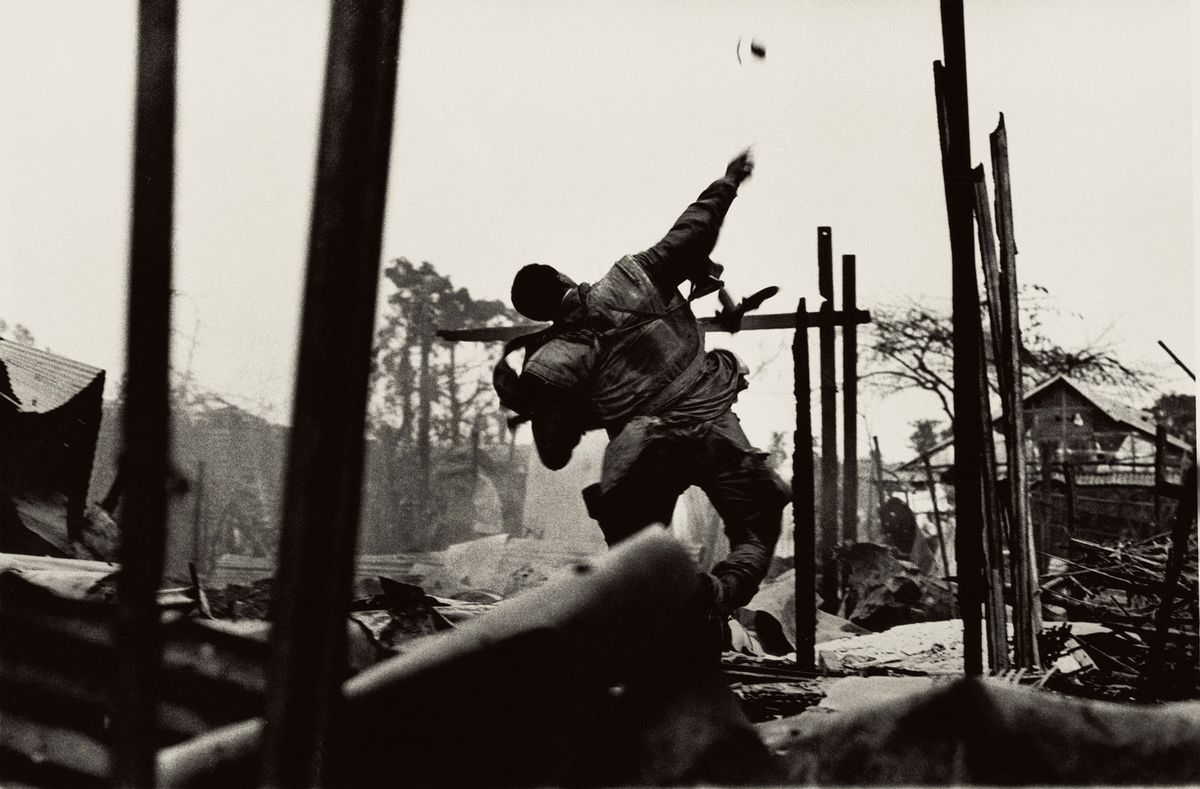Children on the verge of death, victims of landmines, soldiers tormented shortly before execution, and a man shot through the brain are just some of the subjects of the more than 250 photographs by Don McCullin on show at Tate Britain. “You have to bear witness. You cannot just look away”, reads a quote by McCullin on one of the walls of the sweeping survey Don McCullin (until 6 May; tickets £16, concessions available). The show includes many of the photojournalist’s signature works—such as Shell-shocked US Marine, The Battle of Hue (1968)—among the powerful, and at times deeply moving, photographs from conflicts in places such as Vietnam, Biafra, Beirut and Northern Ireland. Moreover, the exhibition points to a decline in the newspaper coverage of such difficult subject matter, as McCullin voiced recently: “I’m sick to death of Jamie Oliver, the Beckhams, Gordon Ramsay, footballers and good-looking film-stars in newspapers. It’s pure narcissism. And that is not giving the unfortunates in this world a voice.” The retrospective also covers McCullin’s recent landscapes and still lifes, as well as his early explorations closer to home. The latter include insightful and charming glimpses of London in the (not-so-swinging) 1960s, with sheep on their way to slaughter near the Caledonian Road, children boxing in the street and beer being delivered by horse and cart.
This weekend is your last chance to experience the psychological depth of Lorenzo Lotto’s portraits at the National Gallery (until 10 February; free). Often overshadowed by his fellow Venetian Titian, Lotto nonetheless has built a peerless reputation as a Renaissance portrait artist who pursued an obsessive commitment to understanding the human condition through expressive and meticulous attention to detail. Now seen as a pioneering influence within the fields of modern portraiture and artistic psychoanalytical studies, Lotto’s interest in the interior lives of others is apparent in the narrative quality he brings to the medium. Each sitter in Lorenzo Lotto: Portraits seems to possess a heightened level consciousness, as if they are contemplating their own life story and even their own mortality. Most notably perhaps, many of Lotto’s subjects were poor tradesmen and labourers, whose faces merge with nobles and merchants in a democratic exploration of the self.
Plasticine on canvas makes for a visceral viewing experience, something that Henry Hudson, a prolific user of the material, knows all too well. Nothing Sticks to Nothing (until 16 March; free) at Hannah Barry Gallery has Hudson shift into a palette of pinks, using plasticine’s theatrical and fleshy texture to belie the stillness of his wintry landscapes, where thick fluorescent strokes become unsettling and conflicting. This sense of tension extends from his paintings down on to the gallery floor where Hudson has made an imitation marble spillage made of polished plaster mixed with pigmented glue. Transforming the audience into subject, it is an effective way of entirely placing the viewer within a lurid, unsettling world and encouraging a shift in psychological state, however that might manifest.


